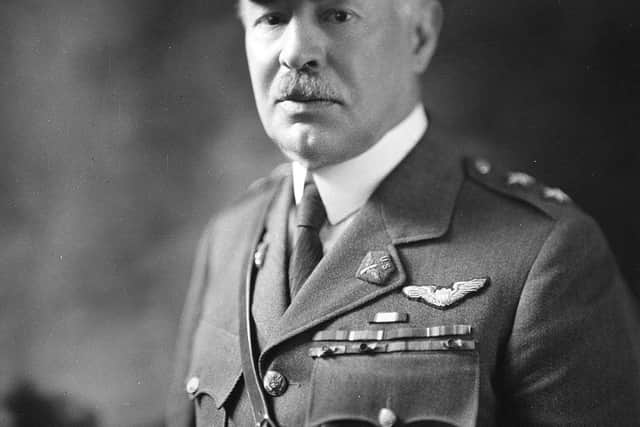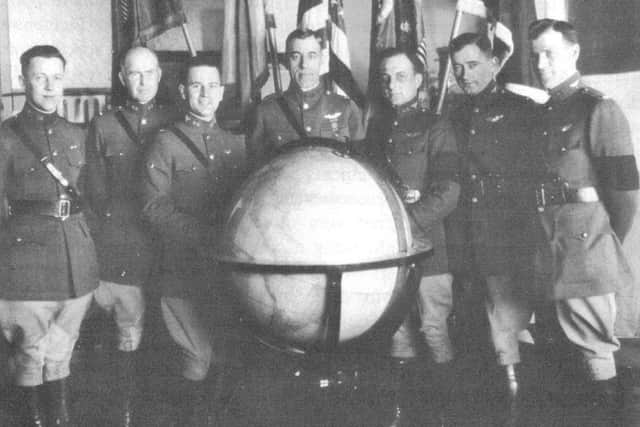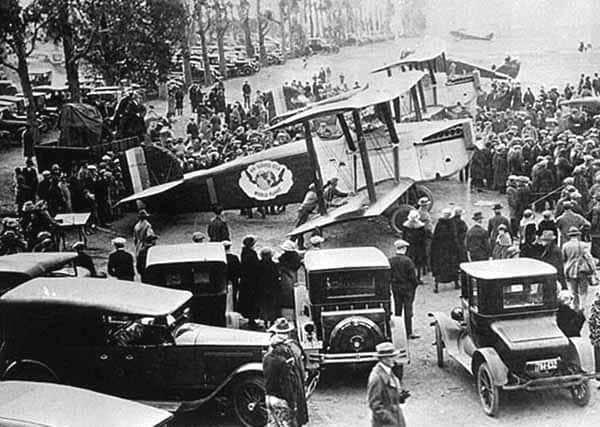Roamer: Historic six nations feat in the air was 100 years ago today
and live on Freeview channel 276
After years of rivalry, four U.S. Army Air Service planes left Seattle on April 6 1924 on the first successful round-the-world flight. Much to the other five countries’ consternation - France, Portugal, Argentina, UK and Italy - 175 days later two of the American planes landed back in Seattle.
The other two crashed and force-landed, luckily all crew survived, and the remarkable circumnavigation makes Jules Verne’s ‘Around The World In Eighty Days’ seem like a weekend in Portrush! Thousands of Seattle sight-seers logjammed local vantage points on April 4 to cheer the planes on their way but fog adjourned the take-off.
Advertisement
Hide AdAdvertisement
Hide AdThe audience returned on April 5 but the late departure was cancelled by a broken propellor. The four planes got into the air on April 6, accompanied by a fifth carrying Lowell Thomas, the WWI journalist whose reports made Lawrence of Arabia an international celebrity. Thomas’s book - ‘The First World Flight’ - was published in 1925 and its 323 picture-captions and 33 chapter-headings admirably encompass the dangers and disasters encountered by the fliers.


Chapter eight is headlined ‘Through Alaskan Blizzards’ followed by chapter nine’s ‘Forced Landing’ and chapter ten’s ‘Lost in Alaska’. There’s another ‘Forced Landing in the Jungle of Indo China’ in chapter 18 and chapter 29 recounts ‘The Sinking of the Boston’.
Each plane had interchangeable wheels and floats or ‘pontoons’ - hence Boston’s demise - and was named after, and christened with the water of an American city - Seattle, Chicago, Boston and New Orleans. Each had a lead and co-pilot, with substitutes for injury and illness, and there was a replacement Boston, after it sank.
Maj. Frederick L. Martin and SSgt. Alva L. Harvey flew Seattle; Lt. Lowell H. Smith and 1st Lt. Leslie P. Arnold piloted Chicago; 1st Lt. Leigh P. Wade and SSgt. Henry H. Ogden flew both Bostons and New Orleans was flown by Lt. Erik H. Nelson and Lt. John Harding Jr.
Advertisement
Hide AdAdvertisement
Hide AdSadly none of the airmen boasted Irish connections though the whole enterprise was commanded by the Air Service Chief, Major General Mason M. Patrick, whose Scots Irish roots dated back to circa 1730. The Major General also co-ordinated the design of the Douglas World Cruiser (DWC), a converted torpedo bomber chosen for the venture.


None of fliers would have taken photos during an emergency - particularly in the open cockpit of a flimsy, hand riveted, single engine biplane with wire-braced wings and a wooden propellor - but the photos and captions in Lowell Thomas’s book are remarkable.
One picture is Major Martin “smashing ice to keep it from damaging” his aircraft. Another caption exclaims: “The first time in history that a plane was ever refuelled in mid-air”. The photograph shows a slender tube from one plane, precariously held in place on the other plane by a wind-swept pilot almost out of his cockpit. There’s a shot of Wade and Ogden “awaiting rescue in the North Atlantic” and the photo captioned: “Major Martin and Sergeant Harvey at the end of their adventure” scarcely hints at their collision with an Alaskan mountainside, or six days in subzero isolation, or four more days in an unoccupied hut before stumbling into civilisation!
There were no seatbelt signs or the captain’s calming voice on the intercom when “strange air currents sucked the planes down over the dark peninsula of Malaya” - there was no technology of any sort, and they’d even ditched their parachutes!
Advertisement
Hide AdAdvertisement
Hide AdBut there was ample back-up, including Army and Air Service mechanics and specialists; Fisheries and Coastguard personnel; Standard Oil Company reps with vast stashes of fuel along the route and five U.S. Navy vessels with 2,500 seaman patrolling over-sea itineraries. The ships also carried 15 extra engines, 14 spare pontoons, replacement wings and enough spare parts to build two new planes.


After 363 hours and 7 minutes flying, 175 calendar days, 26,345 air miles, 22,260 gallons of fuel and 1,026 gallons of oil, Chicago’s wheels touched Seattle’s runway at 1.28 pm Pacific time on September 28 1924, followed immediately by New Orleans. A jubilant throng welcomed them home. The rest of the six nations teams either crashed, force-landed or abandoned flying. Fog force-landed the British three-man Vickers Vulture amphibious biplane off the east Russian coast on August 4, fortunately with no casualties.